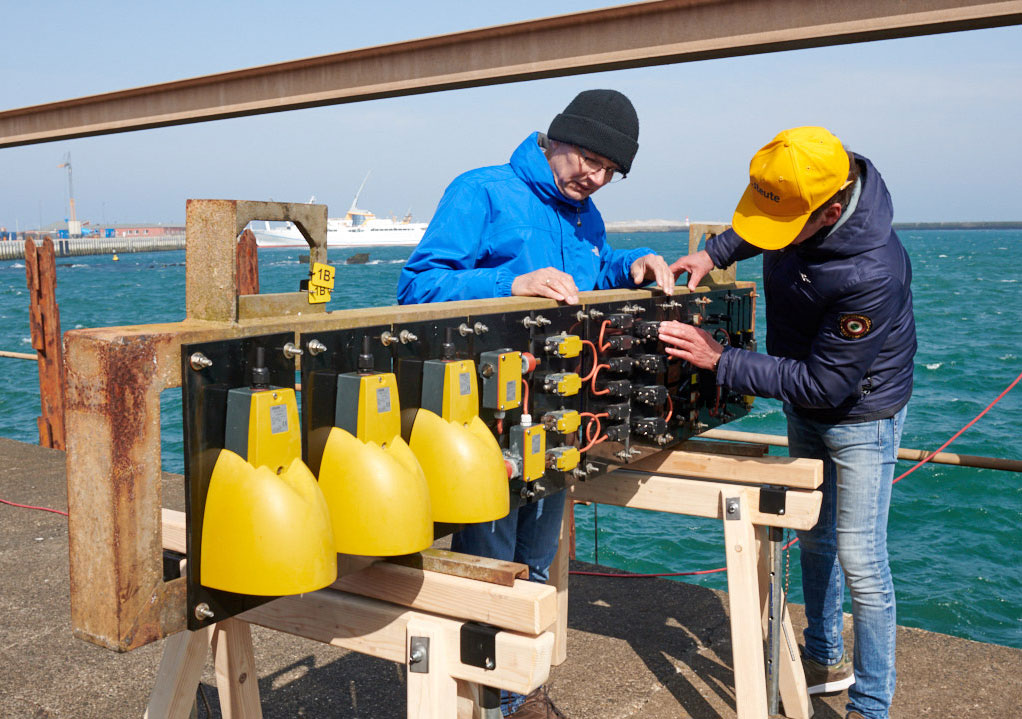01/07/2019
steute tests Extreme switches in the North Sea
Most Extreme switches are suitable for use in damp, wet and even salt water environments. Corresponding corrosion tests, for example the salt spray test according to DIN EN ISO 9227, monitor the quality of such switches. But how do these switches perform in practice? For example, how are they affected by repetitive waves or underwater pollution? These are crucial questions, as Extreme switches are often used in maritime applications on ships, on drilling platforms, in quay anchor systems or on container terminals in seaports.
Helgoland
To find answers to these questions, the steute Fraunhofer IFAM (Institute for Production Technology and Advanced Materials) in Bremen has commissioned a 1-year exposure test at its location on the small German island of Helgoland. The test procedure was as follows: different products from each selected Extreme product group (position switches, foot switches and pull cord switches) were attached to the exposed south pier, where the North Sea waves splashed them for one year. Some devices are installed in the tidal range, which means that they are sometimes submerged and sometimes not. Possible limitations of the switches in moving salt water would therefore be revealed. Where would pollution be evident and would this affect the functional capacity of the switches?
Extreme conditions
These are environmental conditions to which switches are hardly exposed in practice. Rainer Lumme, extreme product manager Extreme: “The purpose of these tests was to expose the switches to conditions that were so extreme that they went beyond all tests that the approval authorities normally perform. This allowed us to better understand any weaknesses. "
Tests completed!

The tests on the North Sea have now been completed. The final IFAM report is not yet available, but the appearance of the switches after a year of exposure to salt and splash water and previous functional tests have revealed that the switches in all different series are salt water resistant. The switches are still fully functional after twelve months. Even the label and the lasered type plates are still legible. The pre-treated and powder-coated housings and the interior of the switches (contact blocks, plungers and pedal shafts) are all corrosion-free after the test. This is proof of the high quality of both the surface coatings and the seal.
Optimize existing series
steute will use the IFAM test results for the optimization of existing series of switches and for the development of new "Extreme" devices. Rainer Lumme: “We now have the confirmation that we can use the plastics that we use for our enclosures and actuators for unlimited requirements. We will therefore intensify our efforts to replace metal with plastic - also in our heavier-designed switches."
